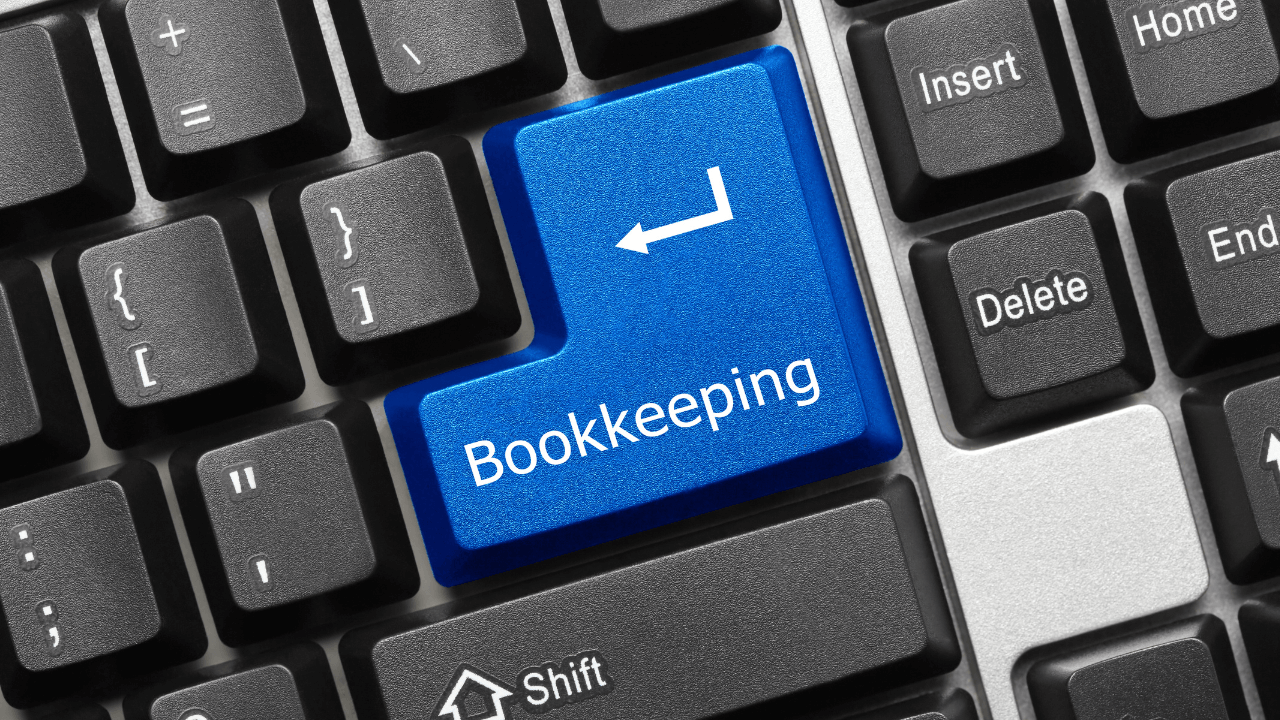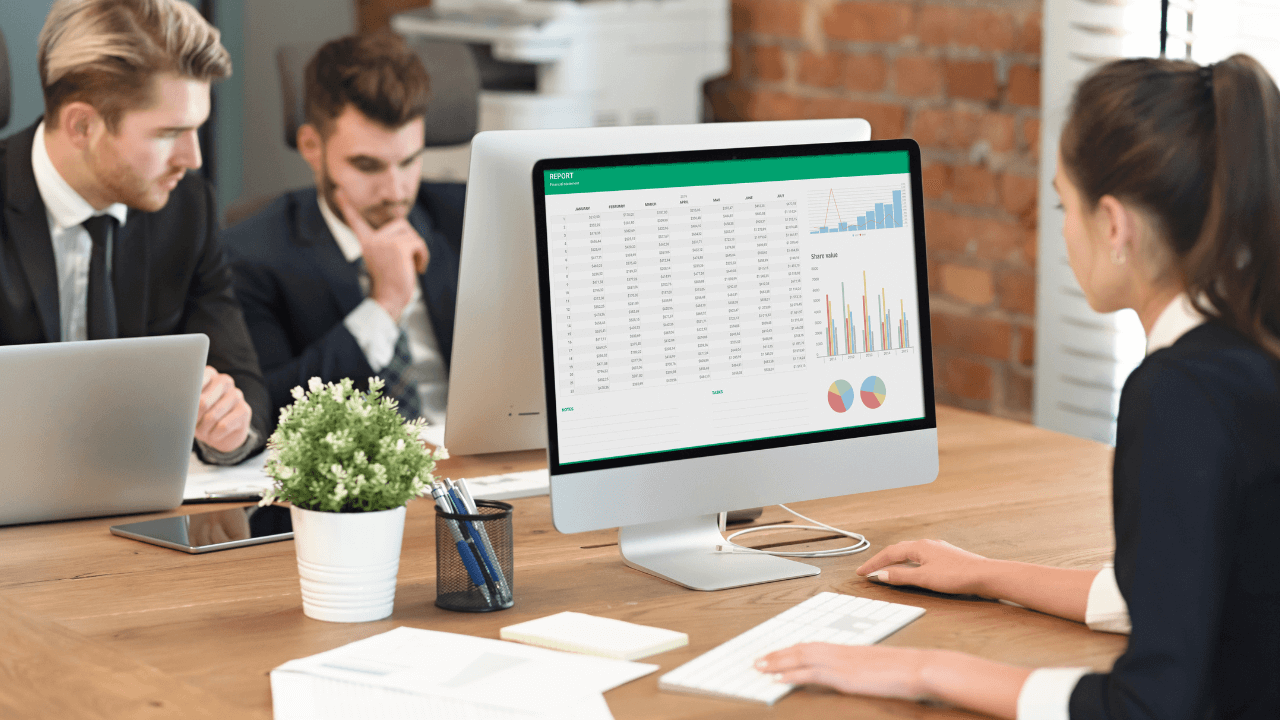Language:
What Is Bookkeeping? A Guide for Small Business Owners
Bookkeeping is a crucial aspect of managing and running a successful business. It involves the systematic recording, organizing, and tracking of financial transactions.
This allows business owners to have a clear understanding of their finances and make informed decisions for the growth and success of their enterprise.
So, if you’re a small business owner, mastering the art of bookkeeping is essential for your financial success. But what is bookkeeping, and how can it benefit your business?
In this step-by-step guide, we’ll break down everything you need to know about bookkeeping and give you the tools to take control of your finances like never before.
So grab a cup of coffee and dive into small business bookkeeping!
What Is Bookkeeping?

In simple terms, bookkeeping is maintaining accurate and up-to-date records of all financial activities within a business. These include sales, purchases, expenses, payments, and receipts.
The records are typically kept in ledgers or accounting software programs like doola Bookkeeping.
Bookkeeping provides an accurate picture of a business’s financial health at any given time. This enables business owners to monitor their cash flow, track expenses, identify potential areas for cost-cutting, and ensure compliance with tax laws.
It also helps businesses prepare for tax season by providing organized financial statements that can be used to file taxes accurately.
Bookkeeping may seem daunting for small business owners unfamiliar with accounting principles. However, it does not have to be complicated if you follow some basic steps.
Step 1: Set up a Chart of Accounts
A chart of accounts is a list that categorizes all financial transactions within your business. It typically includes assets (such as cash and inventory), liabilities (loans), equity (owner’s investment), income (sales), and expenses (rent and utilities).
Setting up this chart will help you organize your finances and track them easily.
Step 2: Record Transactions
Once you have set up your chart of accounts, start recording all your financial transactions accurately using invoices/receipts/bills as proof. This includes both cash and credit transactions.
Step 3: Reconcile Bank Statements
Reconciling your bank statements means comparing your recorded transactions to your statement and ensuring they match. This will help identify any errors or discrepancies and keep your records accurate.
Step 4: Prepare Financial Statements
Financial statements, such as income and balance sheets, summarize your business’s financial performance over time. They can help you evaluate your business’s profitability and make informed decisions.
Importance of Bookkeeping for Small Businesses
While bookkeeping may seem daunting for small business owners juggling multiple roles, it is crucial for their businesses’ overall growth and sustainability.
One of the main reasons is that it helps to maintain accurate financial records.
Small business owners can clearly understand their company’s cash flow and make informed decisions about future investments or spending by keeping track of all financial transactions.
This also allows them to identify financial discrepancies or errors before they become major problems.
Moreover, bookkeeping enables small business owners to comply with tax laws and regulations. As a business owner, you are legally obligated to report your income accurately and pay taxes accordingly.
Without accurate bookkeeping records, it can be challenging to file taxes correctly, which can result in penalties or even an audit from the IRS.
Proper bookkeeping provides valuable insights into a small business’s financial health in addition to these practical benefits.
By maintaining organized records of sales and expenses over time, owners can analyze trends in revenue generation and determine which areas need improvement or investment.
Furthermore, keeping accurate books is crucial when seeking funding from investors or lenders. Most lenders will require detailed financial statements as part of the approval process for loans or credit lines.
Having well-maintained books shows potential investors that your business has its finances under control and increases your chances of securing funding.
Bookkeeping 101: Basic Bookkeeping Terms and Concepts

Bookkeeping is an essential aspect of managing a small business.
It involves keeping track of all financial transactions, including income, expenses, and assets, to ensure that your business’s financial records are accurate and up-to-date.
Understanding these basic terms and concepts will help you keep accurate financial records for your small business.
📒 1. Assets: Assets refer to any resources that your business owns, such as cash, inventory, equipment, or property. These are recorded on the balance sheet and represent the value of what your business owns.
📒 2. Liabilities: They are debts or obligations your business owes to others. This can include loans, accounts payable, or accrued expenses. Liabilities are also recorded on the balance sheet.
📒 3. Equity: Equity represents the ownership interest in a company after deducting liabilities from assets. It is calculated by subtracting total liabilities from total assets and reflected on the balance sheet.
📒 4. Income: Income refers to the money your business earns through sales or services provided. It can also include interest earned from investments or rental income.
📒 5. Expenses: Expenses are all costs incurred in running your business, such as rent, utilities, salaries, wages, supplies, etc.
📒 6. Employee Payroll Taxes: Employee payroll taxes refer to deductions from employee paychecks for tax purposes such as Social Security contributions and Medicare taxes.
📒 7. Depreciation: Depreciation refers to the gradual loss of value of an asset over time due to wear and tear or obsolescence. It is recorded as an expense on the income statement over its useful life rather than being expensed in one go at purchase.
📒 8. Accounts Payable (AP): Accounts payable refers to money owed by a company for goods or services purchased but not yet paid for.
📒 9. Accounts Receivable (AR): Accounts receivable refers to money owed to a company for goods sold or services provided but not yet received payment for.
📒 10. Double-entry accounting: This bookkeeping method records every financial transaction in two separate accounts—one as a debit and the other as a credit. This ensures accuracy and helps maintain the balance of accounts.
📒 11. General Ledger: The general ledger is where all financial transactions are recorded in chronological order. It serves as the foundation for preparing financial statements.
📒 12. Balance Sheet: A snapshot of your business’s financial position at a specific time, usually at the end of an accounting period. It shows assets, liabilities, and equity.
📒 13. Income Statement: Also known as a profit and loss statement, an income statement shows how much your business has earned or lost during a particular period after deducting expenses.
📒 14. Cash Flow Statement: A cash flow statement tracks the inflow and outflow of cash within your business over a specified period. It helps determine if your business has enough cash to cover expenses.
Setting Up a Bookkeeping Process
Setting up a bookkeeping system is essential for any small business owner. The first step is understanding your business needs.
This includes the size of your business, the number of transactions you have per month, and what type of financial reports you need (e.g., profit and loss statement, balance sheet).
This will help determine what bookkeeping system is best suited for your business.
Next, you have to choose between single-entry and double-entry bookkeeping methods. Single-entry is simpler and easier to maintain but may not suit businesses with many transactions or complex financials.
Double-entry is more comprehensive and involves recording every transaction twice, once as a debit and once as a credit, making it more accurate and time-consuming.
Once you have chosen your method, you must decide whether to keep records manually or use accounting software.
While manual systems can work well for small businesses with few transactions, accounting software can save time by automating tasks such as data entry and reconciliations.
You’ll also need to create a chart of accounts, essentially a list of all the categories under which different types of transactions are recorded.
It’s important to establish an organized filing system for all financial documents and transactions, which you should record regularly – this could be daily, weekly, or monthly, depending on your business needs.
Choosing a Method (Cash vs Accrual)
The two main methods of bookkeeping are cash and accrual.
The cash method, also known as cash-basis accounting, is a simple and straightforward approach where income and expenses are recorded when money physically changes hands.
This means that revenue is recognized when customers receive payment, and expenses are recorded when bills are paid.
On the other hand, the accrual method, also known as accrual-basis accounting, recognizes income and expenses when earned or incurred, regardless of when payments are made or received.
Since both methods are opposite, the decision ultimately depends on several factors, such as the size of your business, the type of industry you operate in, and your future growth plans.
The cash method might suit you if you have a small business with straightforward operations and minimal transactions. Its simplicity makes maintaining accurate records easier without extensive accounting knowledge.
It also helps manage cash flow, as income taxes are only paid on money received.
However, the accrual method would be more appropriate if your business deals with credit sales or purchases on an account or has a high volume of transactions throughout the year.
This method records revenues and expenses as they occur rather than waiting for payments to be made or received.
Tracking Income and Expenses

Tracking income and expenses is a crucial part of bookkeeping that requires diligence and attention to detail. Accurate bookkeeping also helps manage cash flow effectively.
This information will be used for tax purposes when filing returns with the IRS. It’s essential to keep a detailed record of all the money coming into and out of your business throughout the year.
In addition to tracking day-to-day transactions, it’s essential to maintain separate records for major one-time payments such as taxes or loan repayments.
This readily available information will make reconciling accounts easier and catching any discrepancies or errors before they snowball into bigger financial issues.
This involves comparing bank statements with records in your books to ensure they match up correctly. Reconciling accounts helps catch any discrepancies or errors before they snowball into bigger financial issues down the line.
Creating Financial Statements
Financial statements are essential to bookkeeping and crucial for understanding a business’s financial health.
They provide a snapshot of a company’s financial position, performance, and cash flow at a particular time. There are three main types of financial statements: balance sheet, income statement, and cash flow statement.
A balance sheet is a summary of what a business owns (assets), owes (liabilities), and its net worth (equity) at a specific date. It follows the fundamental accounting equation – Assets = Liabilities + Equity.
This statement overviews the company’s financial position and helps assess its liquidity and solvency.
Also known as a Profit and loss Statement (P&L), an income statement shows a company’s revenue during a specified period. After deducting taxes and interest expenses, it subtracts all expenses to arrive at its net profit or loss.
However, a cash flow statement only tracks cash inflows and outflows over time to help you understand how money moves through your business.
A cash flow statement has three types of activities: operating activities (cash generated from day-to-day operations), investing activities (cash spent on long-term assets like property or equipment), and financing activities (cash raised from issuing stocks, taking loans, etc.).
While positive cash flow indicates a healthy financial position, a negative cash flow may show that the business struggles to meet its financial obligations.
Tools and Software for Bookkeeping

Bookkeeping, the process of organizing and recording financial transactions, can be tedious and time-consuming for small business owners. Fortunately, many tools and software are available to help streamline this process and make bookkeeping more efficient.
1. Bookkeeping Software
Bookkeeping software is a powerful tool that allows users to track income, expenses, and other financial activities with ease and accuracy.
By automating tedious tasks such as data entry and reconciliation, you can save time and reduce the risk of errors that can occur with manual bookkeeping methods.
With features like customizable reports, invoicing capabilities, expense tracking, and integration with bank accounts, this software streamlines the accounting process for small and large corporations.
2. Spreadsheets
Spreadsheets can be an effective tool for those who prefer a more hands-on approach to bookkeeping. Programs like Microsoft Excel or Google Sheets allow users to create customized templates for recording financial transactions.
However, it is important to note that using spreadsheets requires a certain level of proficiency in Excel formulas and functions.
3. Invoicing Tools
Invoicing applications are designed to automate the invoicing process, making it easier and more efficient for businesses of all sizes.
With just a few clicks, users can create professional-looking invoices, which they can customize and send directly to clients via email.
You can also access features like automatic payment reminders, recurring billing options, and real-time invoice status tracking. This saves time and ensures that payments are processed promptly, improving cash flow management.
4. Payroll Software
Payroll management can be time-consuming and complex for small business owners.
Payroll software like Gusto can simplify this process. These programs automate tasks such as calculating employee wages and taxes while providing features such as direct deposit and tax filing services.
5. Online Banking
Online Business Banking provides a convenient and efficient way for businesses to manage their finances.
With just a few clicks, businesses can access a wide range of banking services, such as checking account balances, transferring funds between accounts, paying bills, and even applying for loans.
Therefore, it can be a useful tool for bookkeeping only if you choose the best online banking platform that links with accounting software so transactions can be automatically imported into the system, saving time on manual data entry.
Tips for Maintaining Accurate Bookkeeping
Maintaining accurate records is essential for small business owners to make informed decisions and comply with tax regulations.
Not only does it provide you with a clear understanding of your financial standing, but it also helps you make informed decisions for future investments and strategies.
Following these tips can streamline your bookkeeping process and ensure smooth sailing even in turbulent times.
✅ 1. Keep all documents organized
The first step towards maintaining accurate records is having a systematic organization system. This includes keeping all physical and digital documents in separate folders according to their categories, such as receipts, invoices, bank statements, etc.
Label each file clearly for easy retrieval when needed.
✅ 2. Stay on top of recording transactions
Recording all financial transactions promptly and accurately in your books is essential. This includes tracking cash flow, expenses, sales, payroll, etc.
A delay in recording can lead to confusion and potential errors that may be challenging to rectify later.
✅ 3. Reconcile bank accounts regularly
Reconciling your accounts ensures that all transactions recorded in your books match those in your bank statement accurately.
It helps identify any missing or duplicate payments that need correction.
✅ 4. Separate personal and business finances
As a small business owner, it may be tempting to mix personal and business finances; however, this can create complications while maintaining accurate records.
Having separate bank accounts and credit cards for personal and business use is crucial.
✅ 5. Keep backups of records
Having all financial records is vital in case of data loss due to technical issues or human error.
You can store hard copies or use cloud-based storage options for digital records.
Hiring a Professional Bookkeeper vs DIY Bookkeeping
As a small business owner, you may wonder whether to hire a virtual bookkeeper to handle your own bookkeeping.
While both options have advantages and drawbacks, it is important to carefully consider your business’s needs and goals before making a decision.
One of the main benefits of hiring a professional bookkeeper is the expertise and experience they bring to the table.
A professional bookkeeper has specialized knowledge of accounting principles, tax laws, and financial regulations that can ensure accurate record-keeping for your business.
By delegating this responsibility to an experienced bookkeeper, you can free up valuable hours that can be better spent growing and managing your business.
Moreover, hiring a professional bookkeeper can also provide peace of mind during tax season.
Their thorough understanding of tax laws and regulations can help ensure that all necessary documents are properly filed on time.
On the other hand, handling your own bookkeeping may seem like a cost-effective solution for small businesses with limited budgets.
With advanced technology and user-friendly software like doula Bookkeeping, many entrepreneurs feel confident enough to manage their own books.
Always Be in the Good Books With doola Bookkeeping

The decision between hiring a professional bookkeeper or managing bookkeeping in-house depends on your business’s specific needs and goals. While outsourcing may come at an additional cost, the valuable expertise there is lucrative.
On the other hand, DIY bookkeeping may be cost-effective but requires you to invest significant time in managing your books accurately.
Get started with doola bookkeeping today to get the best of both worlds. You get access to advanced tools for tracking expenses, generating financial reports, and managing invoices seamlessly.
The keyword here is efficiency – with doola’s intuitive interface and user-friendly design, even those without accounting backgrounds can easily navigate the system.
However, for more complex tasks or in-depth analysis, customers can opt for professional assistance from certified public accountants (CPAs) and bookkeepers.
This hybrid approach ensures that businesses receive comprehensive support while maintaining control over their financial data.
Book a free demo to keep it 100% compliant!



